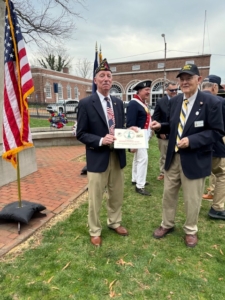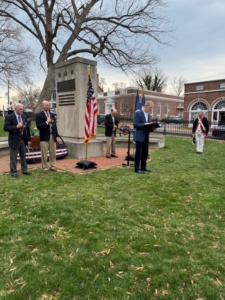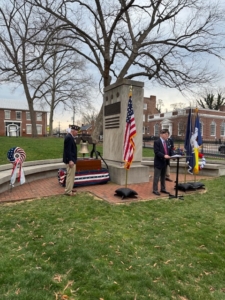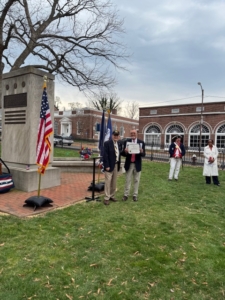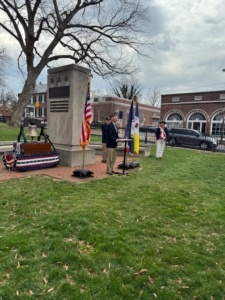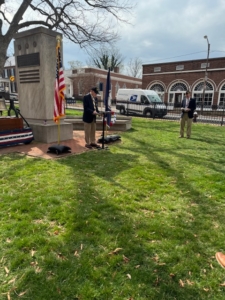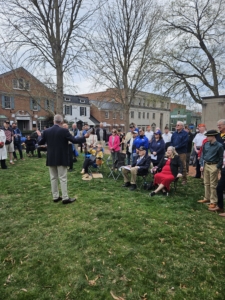Leesburg, VA – National Vietnam Veterans Day, March 29th
The involvement of the United States in Vietnam started after WWII via significant financial and logistical support, and some U.S. military, to aid the French in their war against the communist Viet Minh. President Harry S. Truman declared his doctrine of “containment” of communism in 1947 at the start of the Cold War.
The defeat of the French at Dien Bien Phu May 7, 1954 basically ended the First Indochina war which left communist North Vietnam in control of the country’s northern half. Increasing numbers of U.S military advisers began assisting the noncommunist government of South Vietnam.
From 1957 on, insurgents known as the Viet Cong launched a campaign against the state. North Vietnam supported the Viet Cong, which began fighting the South Vietnamese army.
President John F. Kennedy, who subscribed to the “domino theory” that communism would spread to other countries if Vietnam fell. In 1961, American military advisers began directly working with the South Vietnamese which began a slow increase in involvement and hostile engagements over the next several years. During this time, expanded U.S. aid to South Vietnam resulted in increasing the number of advisers from 900 to 16,300, but this failed to produce results.
February 8, 1962 MAAG-V was replaced by the Military Assistance Command Vietnam (MACV). Events were moving fast as the following year in 1963 the Republic of Vietnam elected president Diem was deposed and killed in a military coup and North Vietnam began sending elements of its own army, armed with Soviet and Chinese weapons, to assist the Viet Cong in the south.
One year later, the Gulf of Tonkin incident occurred in 1964 where 3 North Vietnamese PT boats fired on the U.S.S. Maddox. President Lyndon B. Johnson ordered air strikes against North Vietnam, and Congress passed the Gulf of Tonkin Resolution, which authorized military intervention in defense of South Vietnam and our forces.
From 1965, U.S. involvement in Vietnam escalated rapidly, as President Johnson launched Operation Rolling Thunder against targets in North Vietnam and ordering 3,500 Marines to the region. It became clear that aerial strikes alone would not win the war, so ground troops had to be significantly increased.
In 1968, North Vietnam and the Viet Cong launched the Tet Offensive massive attacks throughout South Vietnam, after which General Westmoreland estimated that 200,000 more U.S. troops were needed for victory. President Johnson rejected his request, announced he would not seek another term in office, and ordered an end to Rolling Thunder.
The U.S. military presence in Vietnam peaked in April 1969, with 543,000 military personnel stationed in the country as opposition to the war was dramatically escalating at home in the U.S as it had become the first TV covered war with near real time reporting every day and night to the American public.
President Johnson’s successor, Richard Nixon, promulgated the Nixon Doctrine which was a policy of “Vietnamization” training the South Vietnamese army so it could defend the country and started a phased withdrawal of American troops. By 1972, there were only 69,000 U.S. troops in Vietnam, and in 1973 the Paris Peace Accords were signed, and the last combat troops departed on 29 March 1973.
April 30th 1975 the capital of South Vietnam, Saigon, fell to the North Vietnamese army and all of Vietnam became one- the Democratic Republic of Vietnam.
By the end of the U.S. involvement, more than 3.1 million Americans had been stationed in Vietnam, and 58,279 had been killed.
written by Richard Ryan

